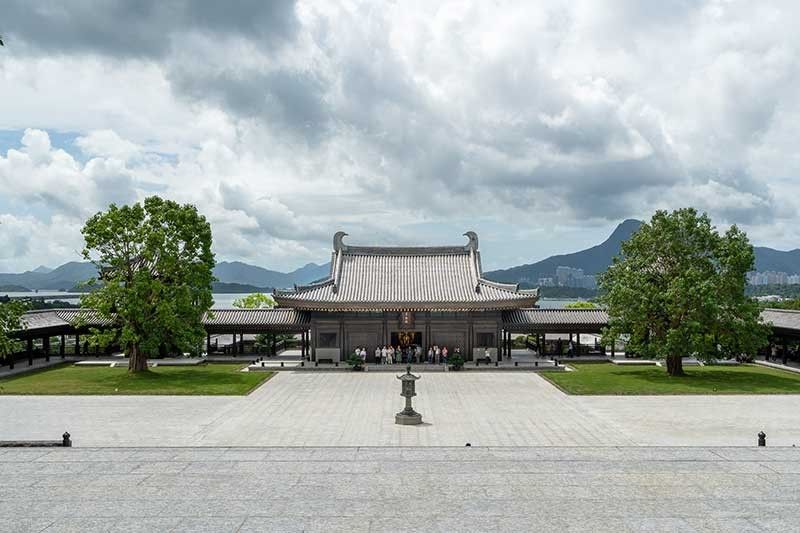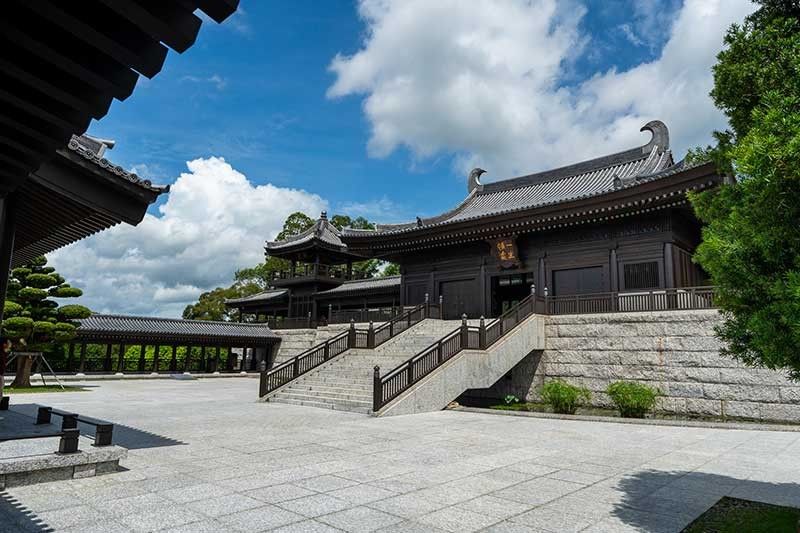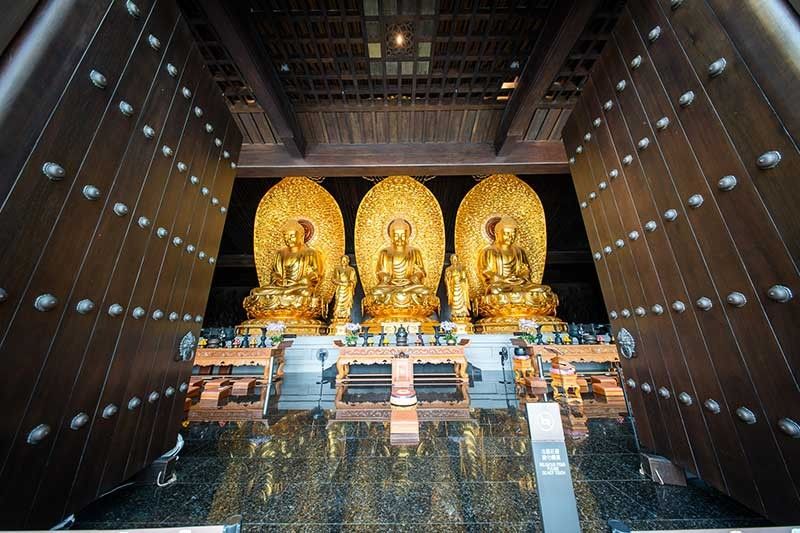Tsz Shan Monastery: A Sense of Calmness in a bustling Hong Kong city

HONG KONG — A trip to a spiritual haven was just the ideal antidote to the sweltering heat that swept Hong Kong in late June.
The Tsz Shan Monastery, a hidden gem on the edge of Tai Po in the New Territories, is a welcome respite from the frenetic pace of this economic enclave.
The monastery, built by Hong Kong’s richest man, Li Ka-shing through his Li Ka-shing Foundation, is envisioned as an institute of Buddhist practice and learning, and to provide a place for quiet contemplation and purification, and to foster a culture of sharing and giving.
Planning and construction of the monastery began in 2003, and has been open to the public since April 2015. A refreshing slice of zen away from the bustling metropolis, it is a Chinese Buddhist monastery established for the preservation of the inheritance of the Dharma preached by Shakyamuni Buddha.
The Foundation has contributed more than HK$3.4 billion (over P2.2 trillion) to acquire the land, the construction costs and the monastery’s operating expenses.
'Superman'
A self-made billionaire, Mr. Li believes that every being has a “bright pearl, long obscured by dust and toil, and when the dust is gone and its light shines forth, a myriad of illuminations blossom across our mountains and rivers.”
Nicknamed "Superman," Li, now 96, is revered as one of the most influential businessmen in Asia. Forbes magazine ranks him as the 38th richest man in the world. A high-school dropout, Li started Cheung Kong plastic in 1950 at age 21 with $6,500 in savings and loans from relatives.

He retired as chairman of CK Hutchison Holdings and CK Asset Holdings in May 2018 but remains a senior advisor. In 2000, he was made Knight Commander of the Order of the British Empire (KBE), a Commandeur de l'Ordre de Léopold (Belgium), and received the International Distinguished Entrepreneur Award (University of Manitoba).
In 2006, he was given the Malcolm S. Forbes Lifetime Achievement Award (Forbes).
Ten Great Vows
Using a map, visitors to the monastery are given the option to collect stamps by following the footsteps of Samantabhadra Bodhisattva by practicing the Ten Great Vows in each pilgrimage spot in the monastery.
Needless to say, I just studied the map and the vows: Venerate all Buddhas. Praise the Tath?gata. Cultivate the Giving of Offerings. Repent Unwholesome Karma. Rejoice in Other’s Virtues. Turn the Dharma Wheel. Plead Buddhas to Remain in the World. Follow Buddhas’ Path. Accommodate and Benefit All Sentient Beings. Share Merits Universally.
Established for the inheritance of the Dharma preached by Shakyamuni Buddha, the monastery, as its website explains, holds “the conviction that the Buddha nature is possessed by all sentient beings. By going through constant hearing, reflecting and practicing, right knowledge and right views could be cultivated and this should, in turn, lead us to the cessation of defilements, the achievement of merit and wisdom, and most importantly, peace and happiness should be obtained.”
“By following Guan Yin's (Avalokite?vara's) spirit of boundless compassion and benevolence in benefiting mankind, the Monastery will strive to propagate the Dharma and enhance the well-being of others.
“Through organising Dharma talks and lectures, spiritual practices, experiential programs, educational activities, and community services, the monastery is dedicated to responding to one's spiritual needs and serving society through the perfected fusion of Dharma.”
The Magnificent Guan Yin
Once you enter the monastery, the colossal statue of the Guan Yin can be seen from any angle. From the Grand Courtyard, devotees passing the Universal Gate can go near the goddess.
Its description reads: “The Guan Yin (Avalokite?vara) Statue has a height of 76 meters, comprising a 70- meter-tall bronze-cast white Guan Yin statue (including a three-tier bronze lotus platform) built upon a 6-meter high granite base. The statue is coated with white fluorocarbon self-cleaning paint and is modeled on sculptures of the Song dynasty.

“Guan Yin has a compassionate and graceful demeanour and on her topknot there is a small image of Amitabha, implying the blessings and protection received through his immeasurable power. In her right hand she holds a wisdom mani pearl and in her left hand a vase, from which she pours pure water to cleanse the phenomenal world. She wears a necklace and her clothes drape elegantly. Her body leans forward as she looks down from above on all beings, guiding them to enlightenment with her compassion and wisdom.”
Sense of calmness
The architectural design of the monastery seamlessly integrates the natural terrain, which is situated on a hill with a beautiful view of the sea. It serves as a pleasant pause for visitors like us who were billeted in a posh hotel in the middle of frenetic Mongkok.
The style of the structures is said to be inspired by the more solemn, stately and elegant styles of the Tang, Northern Song, Liao and Jin dynasties, which existed beginning in the 7th Century.
The color schemes of brown, gray and white lends a peaceful atmosphere to the majestic monastery, creating the perfect location for meditation and reflection.
One would think, however, that a trip to this place would be immensely more enjoyable on colder climates, as the extreme heat of June can be enervating.



















